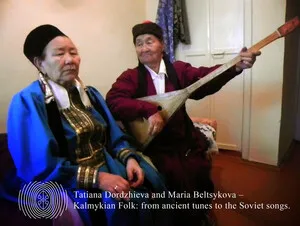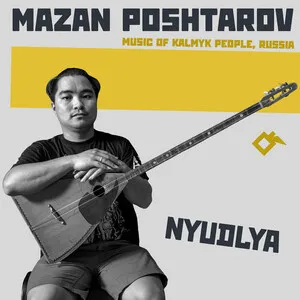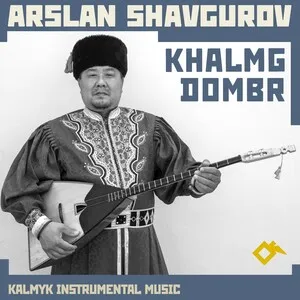Kalmyk music is the traditional music of the Kalmyk people (Western Mongolic/Oirat) who settled in the Lower Volga steppe. It combines steppe epic singing, dance songs, and Buddhist ritual chant, expressed through pentatonic melodies, flexible meter, and storytelling.
Characteristic timbres come from the Oirat two‑string lute (tovshuur), the horsehead fiddle (morin khuur), jaw harp (khel khuur/khomus), and frame or temple drums used in ritual contexts. Vocals move between declamatory epic recitation and ornamented sustained lines with melisma and open-throated resonance. During the 20th century, Soviet-era folk ensembles added accordion (bayan), clarinet, and folk-orchestra textures to arrange local tunes for stage performance.
Kalmyk music emerged from the Oirat (Western Mongol) migrations to the Lower Volga in the 1600s. It draws on older Mongolic epic and long-song practices, horse-culture dance repertoire, and Buddhist chant introduced with the spread of Tibetan Buddhism among the Kalmyks. Oral transmission centered on epic bards and community gatherings.
At the core lies the epic cycle Jangar, performed by jangarchi (epic bards) in semi-recitative song with flexible rhythm and formulaic melodic turns. Ritual music is maintained by Buddhist monks, featuring chant, frame and temple drums, and long horns within the Kalmyk khurul (temple) tradition. Secular dance songs and lullabies preserved pentatonic melodies and call-and-response structures.
Under Soviet cultural policy, professional state ensembles codified local repertoire for stage, adding accordion, clarinet, and folk-orchestra color. Archival expeditions documented epic singers and village repertoire, while conservatory-trained arrangers created choral and orchestral versions of traditional tunes. This period also encouraged pan-regional exchange with neighboring Central Asian and other Mongolic traditions.
Since the 1990s, Kalmyk music has seen renewed interest. Monastic chant reappeared in public life with the reconstruction of temples in Kalmykia, and young artists revived the tovshuur and morin khuur. Some performers experiment with overtone techniques, folk-rock, and world-fusion settings while community ensembles continue to teach dance songs, lullabies, and segments of the Jangar epic.





%2C%20Cover%20art.webp)


